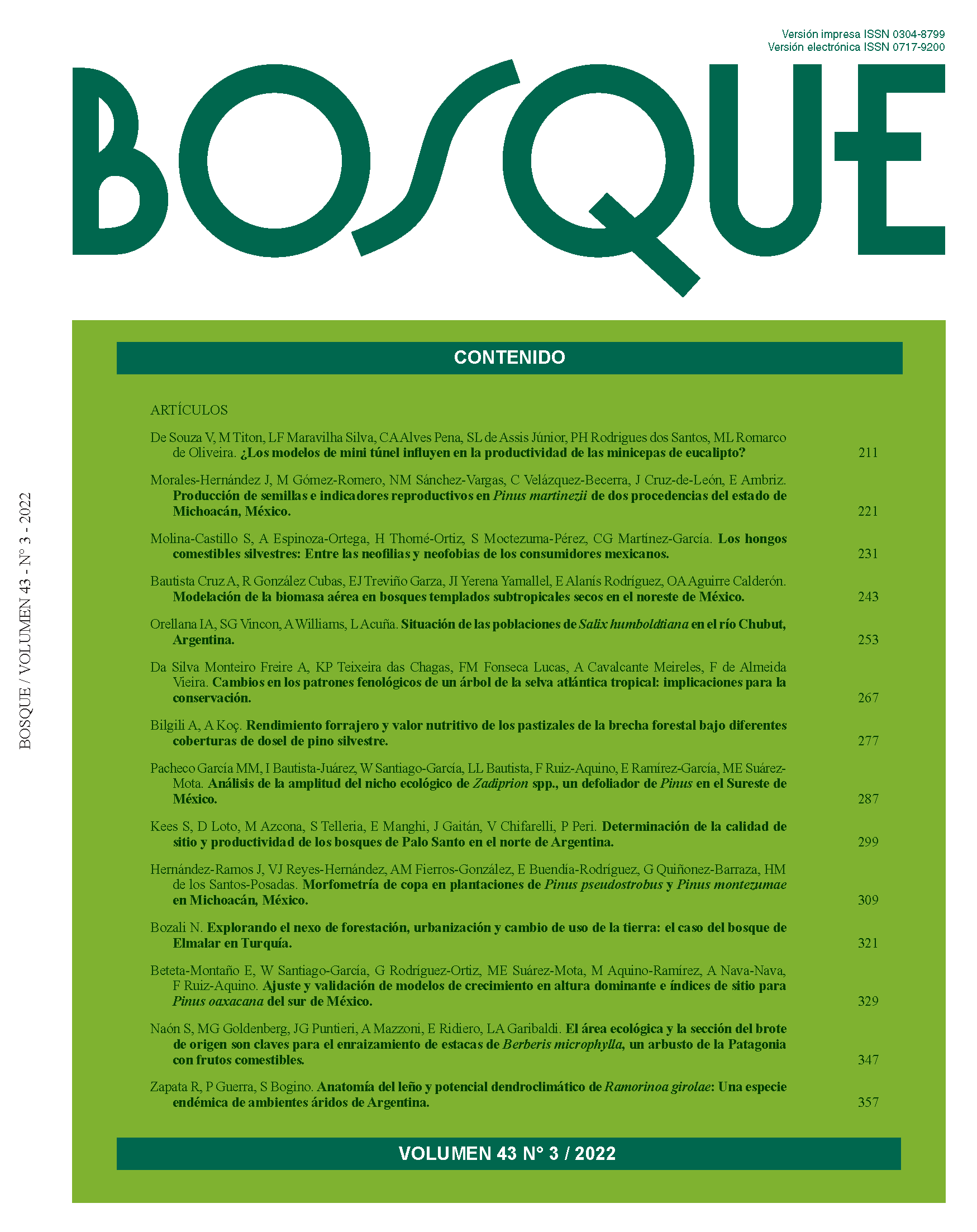Main Article Content
Jan 4, 2023
Abstract
Chica (Ramorinoa girolae, Fabaceae) is an endemic species with a valuable ecological role in arid environments of Argentina, protecting watersheds and wildlife and providing food for humans. The aim of this study was to describe its woody anatomy, growth dynamics, recruitment and relation to climate. Samples from three sites were collected, and anatomical woody analysis and standard dendrochronological techniques were applied. After dating the samples, residual tree-ring chronology was compared with two climate variables, temperature and southern oscillation index (SOI). Results show that chica has variable porosity (diffused, semicircular or circular) with single or grouped vessels. Vessel density varies among the annual growth rings. The storied rays are considered characteristics of a specialized wood. Wider vessels in the beginning of the growing season and terminal parenchyma allowed us to detect tree-ring boundaries. Missing rings and lenses were common, making the dating process difficult. Mean radial growth was 1.2 mm year-1 (SD ± 0.25; 1605 - 2009 period). Temperature and SOI have a positive impact on growth. Results showed the anatomical adaptations of chica wood to arid conditions and its potential to provide data from more than 400 years to environmental and temporal studies.
Downloads

This work is licensed under a Creative Commons Attribution-NonCommercial 4.0 International License.


